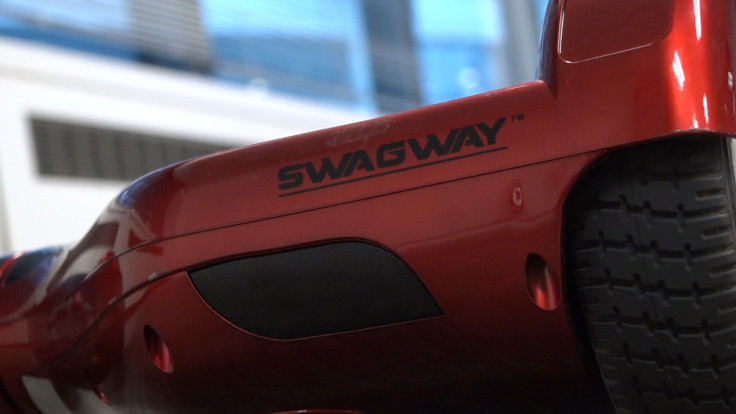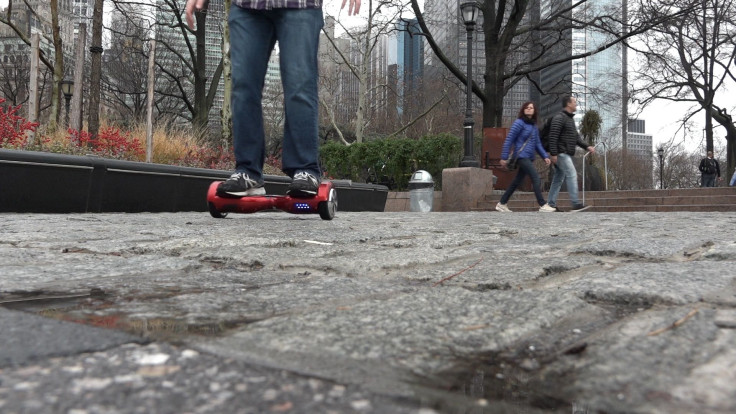Are Hoverboards Safe? How To Avoid Tickets, Fires And Broken Bones While Riding Hottest Christmas Toy Of 2015

Videos of fires and reports of injuries have done little to cool off the hoverboard, one of the hottest holiday gadgets of 2015. Ebay sold nearly 7500 boards on Cyber Monday alone, one every 12 seconds. But they’ve been banned in some cities (such as New York City) and some major retailers stopped selling them due to fire and battery risks. USPS refuses to ship them in any way except for standard ground post.
All that aside, there's a reason you're seeing hoverboards everywhere: they're a lot of fun. If you're giving or receiving one this year, here are three tips to enjoying a hoverboard safely:
1. Know how to get on and off. These are the trickiest maneuvers on a hoverboard. You don’t want to jump vigorously onto a hoverboard -- it won't end well. The trick is to apply even pressure with one foot to stabilize yourself, then step up with the other. Better yet, grab someone or something while you climb aboard, at least for the first few times. Don't try to jump off a hoverboard, either. Instead, slow to a top and then step backward with one foot.
2. Start indoors. Basic operation is simple: your balance and where you shift your weight determines where you move and how briskly. Honestly, it’s as simple as leaning in the direction you want to go. It’s really not any more complicated than that, though you should know how punchy the batteries are. Any sudden movements will cause sudden lunges and jerks. After a few minutes of practice, anyone can get the hang of it (not just the kids).

3. Keep it slow in the beginning. Hoverboards are deceptively fast. You can go up to ten miles an hour on this “Swagway X1.” This sounds exhilarating, which it is, but it can be problematic. Hoverboards don’t have brakes, so attempts at panic stops will probably throw you off the platform. Speed is especially problematic outside with obstacles like pedestrians, bicycles ... and the local police.
4. Know the local laws. Not every city has banned hoverboards, but the ones that have -- like New York -- are instituting high fines. In New York, an officer could slap you with a $200 ticket. How eager officers are to actually ticket you is a separate matter, but keep in mind that you would be breaking a law, if not potentially your face. Hoverboards are completely illegal in the UK, on or off roads.

5. Do not charge unattended. There’s more to worry about than fines and falling, though. Most notably: the risk of fires and explosions, caused by faulty and poor-quality batteries. This Swagway is one of the boards that has caught on fire. But so far the US Consumer Product Safety Commission hasn't steered the public away from hoverboards. Chairman Elliot Kaye said that the agency is looking into the fires, but for now suggests that riders shouldn't charge hoverboards for an extended period of time, particularly unattended overnight.
6. Don't try to fly with it. Traveling with a hoverboard can be a challenge too. Because of their large lithium-ion batteries, some major airlines, including Delta, United and JetBlue have officially banned hoverboards on their planes, with more carriers expected to follow suit.
7. Buy a helmet. As long as you follow safety precautions, one of these hoverboards could be a great, memorable gift. Just take it slow, be cautious and don’t ride in crowded areas. Maybe buy a helmet too, just in case.
© Copyright IBTimes 2024. All rights reserved.






















